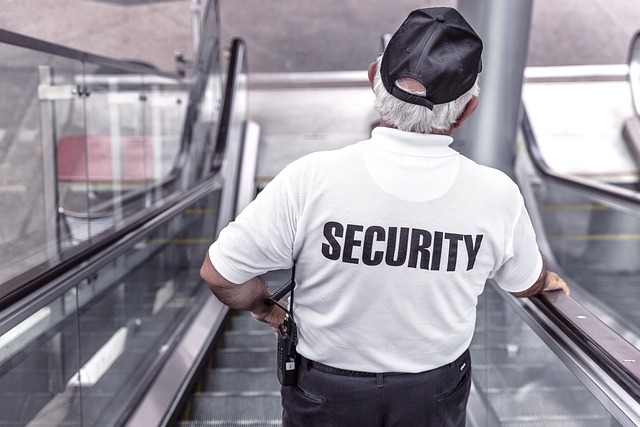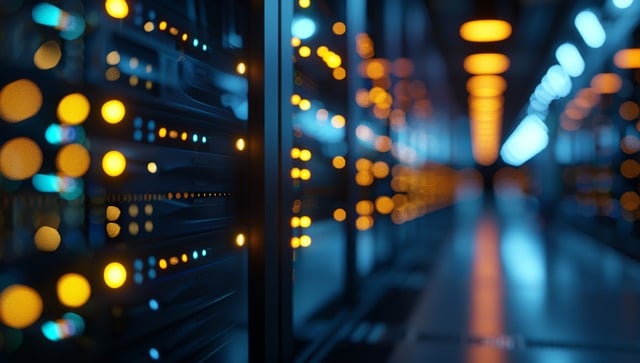Flashlights for Security Personnel have undergone significant technological advancements, transforming from basic devices into sophisticated high-intensity lighting systems that significantly enhance visibility and situational awareness. These modern flashlights are indispensable tools for security personnel, offering adjustable beam settings for various scenarios, from detecting intruders to deterring potential threats and managing critical situations effectively. With their high lumen outputs, robust construction, and long-lasting LED technology, these flashlights provide dependable illumination in dark environments, have a longer battery life, and are designed with user needs in mind, featuring elements like anti-roll design, water resistance, and intuitive interfaces. Their strategic use can incapacitate threats temporarily, allowing security forces to assess situations accurately. The integration of smart technology is set to further revolutionize these flashlights by incorporating AR capabilities for enhanced imaging and threat detection from greater distances. As innovation continues, the future holds promise for even more efficient and user-friendly security tools, redefining modern security practices and elevating safety and operational efficiency.
High-intensity light has revolutionized the field of security, serving as a critical tool for identifying intruders with unparalleled clarity. This article delves into the transformative impact of advanced flashlights on security operations, tracing their evolution and examining the science that underpins their effectiveness. We explore key features that distinguish high-intensity flashlights for security personnel, ensuring they are equipped to detect threats swiftly and accurately. From selecting the optimal light source to showcasing real-world applications through case studies, this comprehensive guide sheds light on the current state and future advancements of this technology, empowering security professionals with the knowledge to enhance their vigilance and response capabilities.
- Understanding the Role of High-Intensity Light in Security
- The Evolution of Flashlights for Security Personnel
- Key Features of High-Intensity Flashlights for Intruder Detection
- The Science Behind High-Intensity Lights and Human Vision
- Selecting the Right High-Intensity Flashlight for Security Needs
- Real-World Applications: Case Studies of High-Intensity Light in Security Operations
- Future Developments in High-Intensity Flashlight Technology for Security Enhancement
Understanding the Role of High-Intensity Light in Security

In the realm of security, high-intensity light sources serve as critical tools for identifying potential intruders. Flashlights for security personnel are specifically engineered to illuminate environments with intense beams, enhancing visibility and situational awareness during patrols or in response to threats. These flashlights not only help in discerning details of a person or environment but also act as deterrents due to their disorienting effects when shined directly at a target. The strategic use of high-intensity light can temporarily incapacitate an individual, allowing security personnel to effectively assess the situation and take appropriate action. The design and technology behind these flashlights prioritize durability, reliability, and brightness, ensuring they are invaluable assets during nighttime operations or in poorly lit areas. They are also versatile, with adjustable beam strengths that range from focused spots for long-distance illumination to broader floodlights for wider area coverage, making them indispensable for a variety of security applications. The integration of high-intensity light within the security toolkit significantly enhances the ability to detect and respond to unauthorized presence, thereby fortifying protective measures in critical situations.
The Evolution of Flashlights for Security Personnel

The tools that security personnel employ have seen significant advancements over the years, particularly in the realm of illumination technology. Flashlights for security personnel have evolved from simple, handheld devices emitting a modest beam of light to sophisticated, high-intensity lighting systems that can instantly transform darkness into clarity, enhancing visibility and situational awareness. The initial designs of flashlights were basic, relying on mechanical switches and incandescent bulbs that provided limited luminance and had to be physically manipulated to activate, often with one hand, which could be a disadvantage in critical situations.
As technology progressed, flashlights for security personnel began incorporating elements such as high-output LEDs, which offered brighter light, longer battery life, and more durable construction. This shift allowed security teams to operate more efficiently under various lighting conditions, from the deepest shadows to brightly lit environments. The integration of advanced materials and electronics led to the development of compact yet powerful flashlights that could deliver a concentrated beam capable of reaching considerable distances, deterring intruders with their mere presence. Additionally, the introduction of hands-free activation features, such as pressure switches or voice commands, enabled security personnel to maintain a ready posture without interruption, ensuring they are always prepared to identify and respond to potential threats. These technological leaps have made modern flashlights for security personnel indispensable tools in the field, reflecting the ongoing commitment to enhancing safety and effectiveness within the industry.
Key Features of High-Intensity Flashlights for Intruder Detection

High-intensity flashlights serve as invaluable tools for security personnel tasked with intruder detection and deterrence. These advanced devices are engineered to illuminate dark environments with a piercing beam, effectively revealing potential threats from a considerable distance. A critical feature of these flashlights is their high lumen output; models often exceed 1000 lumens, capable of outshining shadows and uncovering details that would otherwise remain concealed. This level of brightness not only aids in the identification of intruders but also disorients them, potentially halting any ill-intentioned actions before they escalate.
The durability and robust construction of flashlights designed for security use are paramount, as they must withstand the rigors of fieldwork. These devices are typically constructed from high-strength materials like aircraft-grade aluminum, ensuring they can endure drops, impact, and exposure to various weather conditions without failing. Additionally, features such as a tactical focus that allows users to switch between a wide flood beam for area coverage and a narrow spotlight for long-range target identification are essential. Security personnel require the ability to adapt their lighting to different situations, and these dual capabilities provide the necessary versatility. Moreover, modern high-intensity flashlights often come with rechargeable batteries and LED technology that offers both longevity and energy efficiency, ensuring they are ready for use when needed most.
The Science Behind High-Intensity Lights and Human Vision

Selecting the Right High-Intensity Flashlight for Security Needs

When tasked with ensuring the safety and security of a premise or during patrol duties, security personnel require a reliable high-intensity flashlight that can illuminate potential threats or intruders effectively. Selecting the right flashlight is paramount, as it can significantly impact the performance and success of their mission. Key considerations include the intensity of the beam, the durability of the construction, and the battery life, as these factors directly influence how well an individual can identify suspicious activity in low-light conditions or during the night. Flashlights for security personnel must provide a focused beam capable of reaching distances necessary to assess situations at a glance, while also offering a secondary function such as a strobe or SOS feature to aid in non-lethal self-defense or signaling for assistance. The best flashlights in this category are those that offer high lumens output, with a robust design and impact resistance, ensuring they can withstand the rigors of regular use in demanding environments. Additionally, features such as an anti-roll design, water resistance, and user-friendly interfaces further enhance their utility for security applications. When selecting a flashlight, it is important to consider the specific operational conditions that will influence its performance, including environmental factors and the nature of the duties to be performed. Security personnel must trust their equipment, knowing it will function reliably when needed most.
Real-World Applications: Case Studies of High-Intensity Light in Security Operations

High-intensity light sources, particularly advanced flashlights for security personnel, have become critical tools in enhancing surveillance and response capabilities in various security operations. A case study from a major urban center illustrates this point effectively. Security forces in this location utilized high-intensity LED flashlights to illuminate dark alleyways, revealing suspicious activities that would otherwise remain concealed. The concentrated beams of light not only improved the officers’ visibility but also served as a deterrent against criminal activity. In another instance, a coastal community faced challenges with maritime intrusions at night. The deployment of high-intensity flashlights equipped with long-range capabilities enabled patrolling officers to identify and apprehend individuals attempting to illegally access restricted areas from the sea. These real-world applications underscore the effectiveness of high-intensity light in security operations, highlighting its role in enhancing situational awareness and ensuring the safety of both personnel and the general public. Flashlights For Security Personnel have thus proven to be indispensable tools, offering a reliable means of identification and detection under varying conditions.
Future Developments in High-Intensity Flashlight Technology for Security Enhancement

The field of high-intensity light technology is rapidly evolving, with significant advancements on the horizon for flashlights used by security personnel. Future developments promise to enhance the capabilities of these critical tools, integrating features such as advanced optical systems and augmented reality overlays to improve situation awareness during intrusion detection. These innovations are set to provide security teams with superior illumination and imaging, enabling them to identify potential threats with greater precision and from a distance. The integration of smart technology into flashlights for security personnel will not only intensify the light output but also offer real-time data processing and analysis, allowing for quicker decision-making in high-stress situations. As manufacturers continue to push the boundaries of what’s possible, we can anticipate a new era of security tools that are more efficient, effective, and user-friendly than ever before. The implications for security enhancements are profound, with these technologies set to transform how personnel interact with their environments and respond to threats, ensuring a higher level of safety and operational effectiveness.
In conclusion, the strategic deployment of high-intensity light sources, such as flashlights for security personnel, represents a significant advancement in intruder identification and deterrence. The evolution from conventional lighting to specialized flashlights has been pivotal, enhancing visibility and response capabilities during critical security operations. As outlined in this article, the key features of these high-intensity flashlights are not only rooted in the science of human vision but also tailored to meet the specific demands of various security scenarios. The real-world case studies underscore their efficacy and practical utility. Looking ahead, continued advancements promise to further refine and augment these tools, ensuring that security personnel remain at the forefront of protection with technologies designed for both immediate and long-term safety enhancements.
